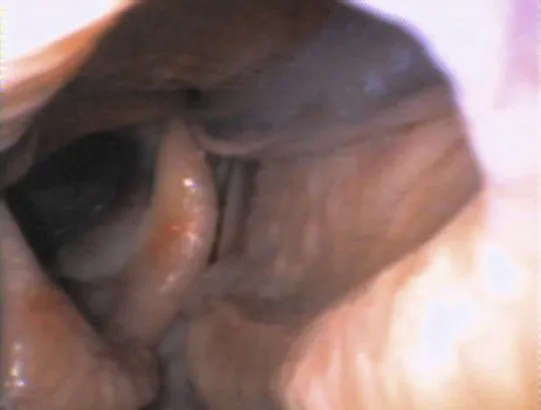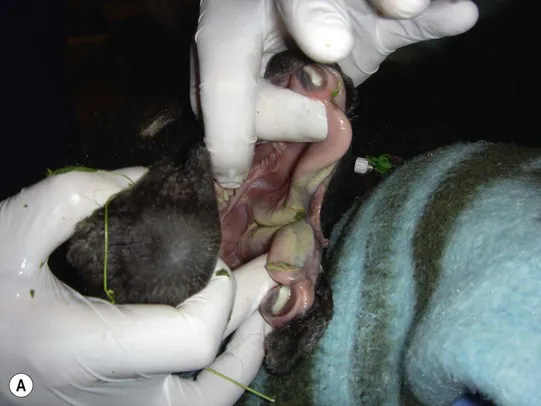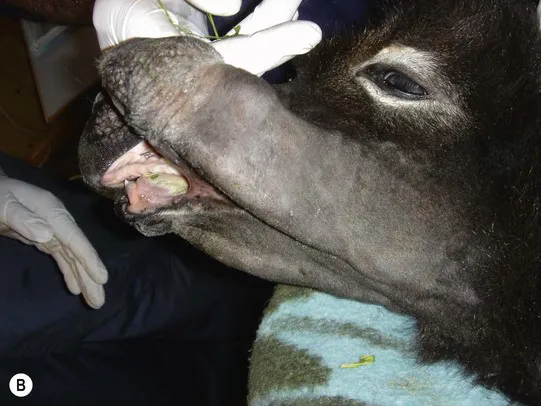
eBook - ePub
Knottenbelt and Pascoe's Color Atlas of Diseases and Disorders of the Horse
Siobhan Brid McAuliffe
This is a test
Compartir libro
- 416 páginas
- English
- ePUB (apto para móviles)
- Disponible en iOS y Android
eBook - ePub
Knottenbelt and Pascoe's Color Atlas of Diseases and Disorders of the Horse
Siobhan Brid McAuliffe
Detalles del libro
Vista previa del libro
Índice
Citas
Información del libro
A unique collection of photographic illustrations of the major equine disorders, providing both qualified practitioners and veterinary students with an invaluable guide to greater diagnostic accuracy, treatment options, and a wider understanding of the processes and signs of equine disorders. The systematic presentation of disorders along with the icon-based key points system of evaluation gives unparalleled ease of access and use. Conditions presented are gathered from around the world, making for a resource of universal application that is a major aid to the rapid visual recognition and interpretation of clinical signs that are vital elements of success in veterinary practice.
- Many new conditions added
- Over 300 new colour illustrations
- Brand new design with icon-based key points boxes.
- Systematic presentation of text with emphasis gives greater ease of access.
- Treatment options and prognoses now included.
- Includes access to online database of all disorders
- Two upcoming top experts brought in to build on the foundation of Derek Knottenbelt and Reg Pascoe's milestone text.
Preguntas frecuentes
¿Cómo cancelo mi suscripción?
¿Cómo descargo los libros?
Por el momento, todos nuestros libros ePub adaptables a dispositivos móviles se pueden descargar a través de la aplicación. La mayor parte de nuestros PDF también se puede descargar y ya estamos trabajando para que el resto también sea descargable. Obtén más información aquí.
¿En qué se diferencian los planes de precios?
Ambos planes te permiten acceder por completo a la biblioteca y a todas las funciones de Perlego. Las únicas diferencias son el precio y el período de suscripción: con el plan anual ahorrarás en torno a un 30 % en comparación con 12 meses de un plan mensual.
¿Qué es Perlego?
Somos un servicio de suscripción de libros de texto en línea que te permite acceder a toda una biblioteca en línea por menos de lo que cuesta un libro al mes. Con más de un millón de libros sobre más de 1000 categorías, ¡tenemos todo lo que necesitas! Obtén más información aquí.
¿Perlego ofrece la función de texto a voz?
Busca el símbolo de lectura en voz alta en tu próximo libro para ver si puedes escucharlo. La herramienta de lectura en voz alta lee el texto en voz alta por ti, resaltando el texto a medida que se lee. Puedes pausarla, acelerarla y ralentizarla. Obtén más información aquí.
¿Es Knottenbelt and Pascoe's Color Atlas of Diseases and Disorders of the Horse un PDF/ePUB en línea?
Sí, puedes acceder a Knottenbelt and Pascoe's Color Atlas of Diseases and Disorders of the Horse de Siobhan Brid McAuliffe en formato PDF o ePUB, así como a otros libros populares de Médecine y Sciences vétérinaires équines. Tenemos más de un millón de libros disponibles en nuestro catálogo para que explores.
Información
Chapter 1
Gastrointestinal system
Part 1: The mouth
Developmental disorders
Cleft palate (Figs. 1.1–1.3)
Cleft palate is an uncommon abnormality. When seen it most frequently involves the caudal aspect of the soft palate; however the hard palate, lips and external nares may also be affected. The degree to which it is heritable is not well defined. Foals with large clefts may show dramatic nasal regurgitation of milk during nursing. In some cases, particularly those with relatively small clefts or clefts in the soft palate, nasal return of milk becomes obvious only after feeding and may be relatively minor in amount. Small clefts may not always be easily visible or produce significant nasal return of food and, occasionally, some are only detected after some years, when nasal reflux of grass and more solid food material may be present. Consequent rhinitis and nasal discharges may not be immediately identifiable as resulting from a cleft palate. Occasionally the cleft is sufficiently small to produce no detectable evidence and these are sometimes identified incidentally during clinical or post-mortem examinations. Large palatal defects in young foals have profound effects including failure to ingest adequate amounts of colostrum, starvation and inhalation pneumonia.

Differential diagnosis: Nasal/oral discharge of milk and/or dysphagia may also be seen with:
• Neurologic dysphagia (associated with hypoxic ischemic encephalopathy in foals)
• Esophageal obstruction
• Laryngeal/pharyngeal abnormalities
• Severe weakness/depression.


Diagnosis
• In some cases, diagnosis can be made with a careful oral examination.
• Endoscopy should be performed via both nares. Oral endoscopy may also be required.
• Thoracic radiographs are useful to identify and characterize secondary pneumonia.
Treatment
• Treatment needs to be directed at two main areas, correction of the abnormality and treatment of secondary problems such as pneumonia.
• Treatment of the defect involves one of a variety of surgical techniques. Dehiscence of the surgical site is a common problem. In severely compromised foals, surgery may need to be delayed while secondary problems (pneumonia, sepsis) are addressed. In these situations, feeding via a nasogastric tube or parenteral nutrition is required.
• The prognosis is better in foals with defects only involving the soft palate.
Cleft tongue and mandible (Fig. 1.4A,B)
This condition has been seen in a number of donkey foals. The condition is thought to be heritable. The condition is visually obvious with no differentials. None of the cases to date have been treated as the defects are usually extensive and frequently these foals present with severe secondary complications related to the inability to nurse.


Parrot mouth (brachygnathia) (Figs. 1.5–1.7)
Parrot mouth is a common congenital abnormality characterized by disparity of the lengths of the mandible and maxilla. The mandible is shorter than the maxilla and there is no occlusal contact between the upper and lower incisors. Males are more commonly affected. In the milder cases, the full extent of the discrepancy may not be obvious at birth, becoming more apparent as the permanent incisors erupt and grow into their normal occlusal positions. The failure of significant occlusion results in an increasing overgrowth of the upper incisors and impingement of the mandibular teeth into the soft tissues of the hard palate. Individuals with lesser degrees of inferior brachygnathia may be less affected but the lingual edges of the lower incisors may become sharp and lacerate the gums and hard palate. More commonly the lower incisors tend to prolong the line of the lower jaw and the labial margins of the upper incisors become long and sharp and may lacerate the lower lip. Simultaneously there is usually a discrepan...